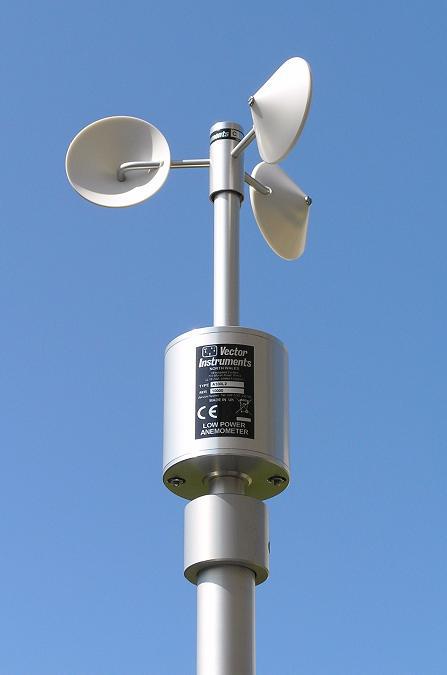Understanding Various Types of Anemometers for Numerous Applications
Understanding Various Types of Anemometers for Numerous Applications
Blog Article
Anemometers Revealed: Comprehending Their Significance in Environmental Surveillance and Precaution
The duty of anemometers in environmental surveillance and safety and security measures is often undervalued, yet their significance is obvious. These instruments have a long history rooted in scientific questions and technical innovations, advancing to come to be vital devices in various fields. From weather forecasting to aviation safety and security, anemometers play an important function in supplying exact information that informs decision-making processes and enhances general safety. Comprehending the intricacies of anemometers unveils a globe of important understandings that are essential to our understanding of the environment and the measures we require to make certain safety.
History of Anemometers
The development of anemometers can be mapped back to the old people where simple wind determining devices were very first made use of. These early wind dimension tools laid the foundation for the advancement of a lot more sophisticated anemometers with time. One of the earliest recognized anemometers was the hemispherical mug anemometer invented by Leon Battista Alberti in the 15th century. This design included 4 hemispherical cups that gathered wind energy, supplying a dimension of its intensity based on the rate of turning.
In the 18th century, the renowned scientist John Thomas Romney Robinson presented the Robinson anemometer, which included four hemispherical cups mounted on horizontal arms that expanded from a central axis. This style ended up being a criterion in atmospheric measurements because of its precision and reliability. Throughout the years, innovations in technology resulted in the advancement of even more modern-day anemometers, including ultrasonic anemometers and laser Doppler anemometers, providing boosted accuracy and efficiency in determining wind speed and instructions. The background of anemometers showcases a remarkable journey of advancement and progress in the field of meteorology.
Sorts Of Anemometers
Throughout the field of weather forecasting, different types of anemometers have actually been created to precisely determine wind rate and direction. Sonic anemometers make use of ultrasonic signals to gauge wind rate and direction precisely. Hot-wire anemometers run based on the concept that the cooling impact of wind on a warmed wire is symmetrical to the wind rate.
Applications in Weather Forecasting
Having actually talked about the different kinds of anemometers utilized in meteorology for gauging wind rate and instructions, it is important to discover their sensible applications in the area. Anemometers play a critical role in weather forecasting by supplying real-time and accurate information on wind problems (anemometer). Meteorologists utilize anemometers to monitor wind rate and direction to anticipate climate patterns, issue cautions for severe climate events like hurricanes, cyclones, and storms, and evaluate weather for aeronautics safety
In meteorology, anemometers aid in recognizing neighborhood and local wind patterns, which are important for predicting climate changes and identifying weather trends. These tools are also utilized in study to research microclimates, urban warmth islands, and air pollution diffusion. In addition, anemometers are used in agriculture to maximize crop monitoring practices, such as irrigation and chemical application, based upon wind conditions.
Importance in Aviation Safety
An essential facet of guaranteeing aeronautics security depends on the precise tracking of wind problems utilizing anemometers. Anemometers play a vital role check it out in air travel by giving real-time information on wind speed and instructions, assisting pilots in making informed choices throughout landing, liftoff, and trip. Solid and uncertain winds can significantly impact aircraft procedures, making it necessary for air travel authorities to depend on precise wind dimensions to make certain the safety and security of guests and staff.

In the vibrant setting of aviation, where even minor modifications in wind speed and instructions can have extensive impacts, anemometers stand as important tools for advertising risk-free and protected flight.
Duty in Environmental Research Study
Anemometers play an important role in ecological study by giving essential information on wind rate and instructions. By precisely measuring wind features, anemometers aid scientists assess the activity of contaminants in the air, examine the influence of industrial discharges, and predict the spread of impurities in the environment.


Conclusion
In conclusion, anemometers have played a crucial function in environmental surveillance and safety procedures. Comprehending the significance of anemometers is necessary for accurately measuring wind rate and direction, which is essential for forecasting weather patterns, making sure risk-free aeronautics operations, and conducting environmental research studies.
One of the earliest well-known anemometers was the hemispherical cup anemometer designed by Leon Battista Alberti in the 15th century. Over the years, innovations in modern technology led to the advancement of even more modern-day anemometers, consisting of ultrasonic anemometers and laser Doppler anemometers, supplying boosted accuracy and effectiveness in determining wind rate and anonymous direction. Hot-wire anemometers run based on the principle that the cooling effect of wind on a warmed cable is symmetrical to the wind speed. Meteorologists utilize anemometers to keep track of wind rate and direction to forecast weather patterns, concern warnings for serious weather events like typhoons, tornadoes, and tornados, and analyze climatic conditions for aeronautics security.
Recognizing the importance of anemometers is crucial for properly measuring wind rate and instructions, which is important for anticipating weather condition patterns, making sure risk-free aeronautics procedures, and conducting ecological research studies. (anemometer)
Report this page